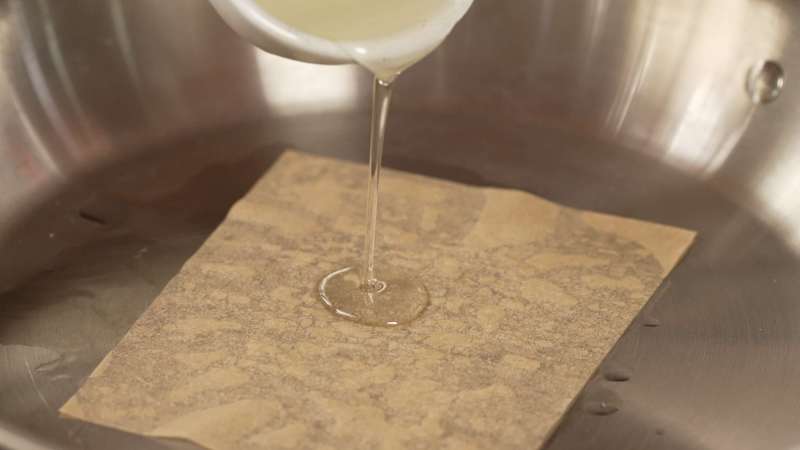Fish is one of those foods that a lot of us don’t often cook at home. It’s finicky, sometimes tricky to get just right, and often sticks in a way that makes you want to just throw the damned pan in the garbage can instead of the sink for two days of soaking. If these frustrations are familiar to you, take a deep breath. We’re here with a solution.
This clever little hack from ChefSteps is here to save your cookware and your sanity with just one quick and easy addition to your fish cooking process — parchment paper. Parchment paper, that humble little sheet that helps your cookies bake perfectly, can also save your pans from a sticky fish fiasco.
How to cook fish with perfectly crispy skin and zero frustrating clean-up

(From ChefSteps)
- Cut a section of parchment that’s slightly larger than your piece of fish.
- In a large enough pan to fit the paper completely, heat a small amount (less than a teaspoon) of oil.
- Place the piece of parchment atop the heated oil, pressing to the bottom of the pan so that it lies flat.
- Add another small amount of oil to the top of the parchment and continue to heat the pan and paper.
- Place the fish fillet on top of the parchment, skin-side down, and press gently with a spatula for about 30 seconds so that the fish doesn’t seize up.
- Continue to cook until the skin on the bottom is golden and the flesh of the fish is cooked about 3/4 of the way through.
- Turn off the heat, and carefully flip the fish so that the other side can finish cooking.
- Voila! Perfectly cooked fish with beautifully crisped skin. Best of all – no nightmarish cleanup when the meal is over.
Parchment paper fish tips and tricks
- Cooking the fish mostly on one side and then flipping just to finish is called “unilateral cooking.” This cooking method ensures a gorgeously brown crispy skin, and yet a delicate and flaky fish.
- This method works much better for fish than a nonstick pan because it creates a better sear. Nonstick pans are infamously poor at crisping food because, on most non-stick surfaces, fat beads up rather than spreading out to the entire surface of your food. This doesn’t happen with parchment paper.
- Always pat dry your meats (not just fish) before cooking. Wiping away excess moisture will also help with browning and even cooking.



